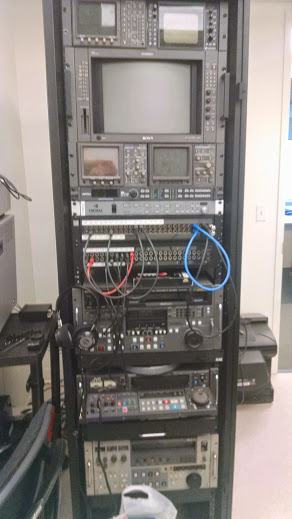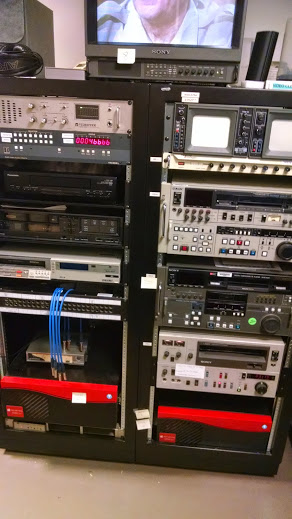As a Visiting Professional Fellow at the Smithsonian Institution, over a two week period I visited five museums, two research centers, and spoke with more than 20 professionals. My goal was to learn as much as I could about workflows, best practices, and procedures for the digital migration of analog moving images and sound recordings from ingest to access, for the purpose of creating a successful digitization program at my home institution, Hagley.
I worked out of the Office of the Chief Information Officer in the Digital Asset Management System (DAMS) department. My mentors were Isabel Meyer, DAMS Branch Manager, and Crystal Sanchez, Digital Video Specialist. I spent most of my time working there talking about digital storage, the procedures of the digital asset management system, metadata standards, authority checking and quality control. I was taught how to use a number of different open source software programs that will assist in these areas.
Every day I had the opportunity to go to a different museum; the National Museum of African American History and Culture; the Smithsonian Institution Archives, the Center for Folklife and Cultural Heritage, the National Air and Space Museum at Udvar-Hazy, Archives of American Art, National Anthropological Archives and Human Studies Film Archives and the Hirshhorn Museum and Sculpture Garden. I spoke with a number of amazing audiovisual archivists, preservation specialists, and conservators who shared with me their workflows and showed me their setups.
Most of the photographs I took during my time there are of playback equipment and look like this:

Above: AAA-Steenbeck


Left: nmaahc rack Right: SIA rack
Each museum and research center dispensed their knowledge and expertise through conversation and demonstration. Many were kind enough to share their written policies and procedures. Through each of these conversations I learned more about tape inspection, equipment cleaning, creating unique identifiers, the use of different capture tools, quality control, checksum checking, metadata creation, and ways to record digitization information in the collection management system and on the item itself.
As I return to work at Hagley, I am excited to put all I’ve learned to use. I am confident that there will be a high-quality program for the digital migration of unstable formats here at Hagley, with policies and procedures which reflect the best practices of the profession. Through this effort, the collections will be more accessible and better preserved for future researchers. I am extremely thankful to my mentors Isabel Meyer and Crystal Sanchez, and to Elizabeth Bugbee at the Smithsonian Affiliations office.
Thank you to Taylor McBride, Walter Forsberg, Dan Finn, Kathryn Guessner, Kira Sobers, Ricc Ferrante, Dave Walker, Stephanie Smith, Cecilia Peterson, MarcTaylor, Megan McShea, Daisy Njoku, Jeanine Nault, Pam Wintle, Nick Kaplan, Briana Feston-Brunet and Emily Nabesny. Thank you all for your time and expertise.
Laurie Rizzo is an Audiovisual Archivist at Hagley.
